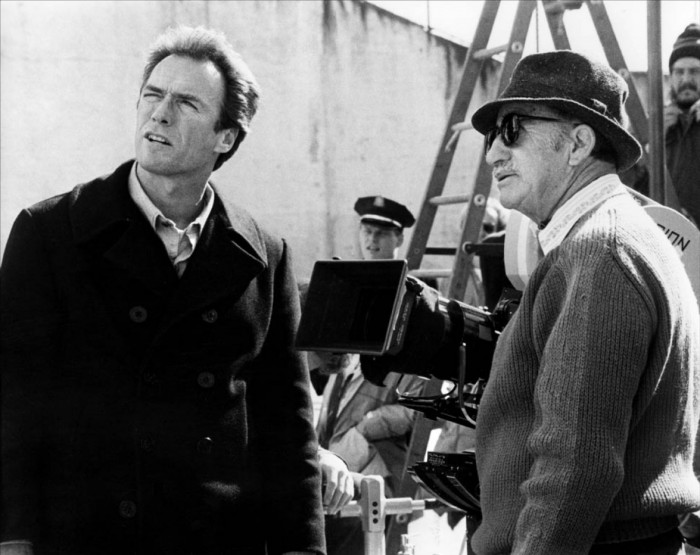HDTGM: A Conversation With Renny Harlin
A couple months back, Paul Scheer and the gang covered The Covenant on How Did This Get Made? Ever since then, Paul and I have been trying to arrange an interview with the film's director, the great Renny Harlin, a Finnish-born filmmaker best known for helming action-packed classics like Die Hard 2, Cliffhanger.
It took a little while to coordinate the conversation, as Harlin has been stationed in China these past two years. But luckily for us, between finishing post on his upcoming Jackie Chan film Skiptrace and launching his new production company in Beijing, Harlin carved out an hour to take a stroll down memory lane.
During our chat, we talked about all sorts of things. From his mission to assemble the "sexiest cast ever" for The Covenant to his original choice to play the villain in Cliffhanger. But as interesting as details like that can be—and as wonderfully quotable as Harlin tends to be—they pale in comparison to the unexpected and over-arching story of Harlin's career. A career that, as you will now see, never even should have been...
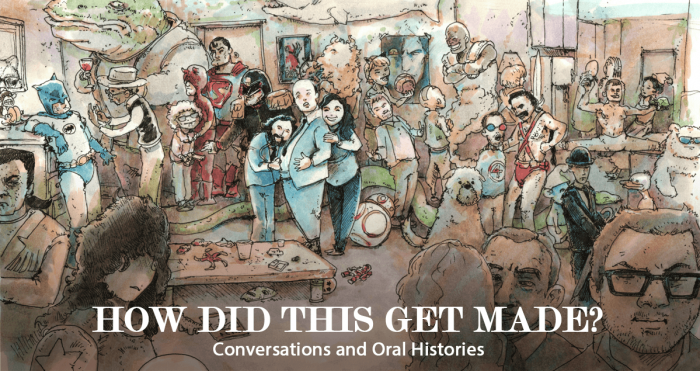 Part 1: Not Just Any DirectorBlake Harris: So before we talk about The Covenant and some of the other films you've directed—including Cliffhanger, the first Rated-R movie I ever saw!—I wanted to first discuss how you got into filmmaking.Renny Harlin: Oh awesome! [laughing] And sure, I'm happy to talk about that.Blake Harris: Great. And I read somewhere that it all kind of started back in the mid-seventies, when Charles Bronson was filming something in Helsinki. Is that true?Renny Harlin: It is. I was about 15 years old. But I should say that, before that, I had been a film buff since I was, like, five years old. My mom took me to the movies all the time, she taught me to understand cinema. So I was always making my own little home movies and writing my own stories and stuff like that.Blake Harris: But then, as a young teenager, that interest reached a new level?
Part 1: Not Just Any DirectorBlake Harris: So before we talk about The Covenant and some of the other films you've directed—including Cliffhanger, the first Rated-R movie I ever saw!—I wanted to first discuss how you got into filmmaking.Renny Harlin: Oh awesome! [laughing] And sure, I'm happy to talk about that.Blake Harris: Great. And I read somewhere that it all kind of started back in the mid-seventies, when Charles Bronson was filming something in Helsinki. Is that true?Renny Harlin: It is. I was about 15 years old. But I should say that, before that, I had been a film buff since I was, like, five years old. My mom took me to the movies all the time, she taught me to understand cinema. So I was always making my own little home movies and writing my own stories and stuff like that.Blake Harris: But then, as a young teenager, that interest reached a new level?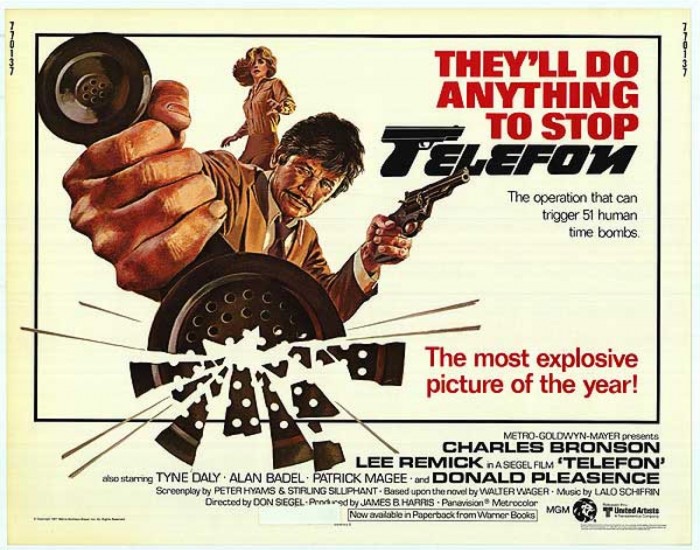 Renny Harlin: Yeah. I happened to read somewhere that [director] Don Siegel was making a film called Telefon and shooting in Helsinki. Because those days, during the cold war, Americans couldn't shoot movies in Russia. So Finland was always doubling for Russia. So I got excited and I went to where they were shooting. And there was Charles Bronson. And also these huge cranes and lights and even a helicopter. All big American stuff that I had never seen in my life. And there's Don Siegel, sitting in a director's chair, smoking a cigar and talking into a megaphone. That's when it crystalized to me what a director is—what kind of a position—and the kind of power that a director has. And that day, I decided that's what I want to pursue with my life. I wanted to be a director. But not just any director: I want to be a Hollywood director.Blake Harris: Ha! And so given that it's the mid-seventies and you're all the way in Finland, how did you go about educating yourself? What were those next steps to become "the guy with the megaphone"?Renny Harlin: Well, that was the funny thing: I had no idea how to go about it.Blake Harris: Exactly!Renny Harlin: I remember that right around that time, in high school, we had some social studies class where the professor asked the students, "What do you want to do when you finish school and grow up?" And you get all the typical answers: I want to be a doctor...a lawyer...an architect. Then it was my turn to answer and—based on my experience watching Don Siegel—I said, "I want to be an American action film director."
Renny Harlin: Yeah. I happened to read somewhere that [director] Don Siegel was making a film called Telefon and shooting in Helsinki. Because those days, during the cold war, Americans couldn't shoot movies in Russia. So Finland was always doubling for Russia. So I got excited and I went to where they were shooting. And there was Charles Bronson. And also these huge cranes and lights and even a helicopter. All big American stuff that I had never seen in my life. And there's Don Siegel, sitting in a director's chair, smoking a cigar and talking into a megaphone. That's when it crystalized to me what a director is—what kind of a position—and the kind of power that a director has. And that day, I decided that's what I want to pursue with my life. I wanted to be a director. But not just any director: I want to be a Hollywood director.Blake Harris: Ha! And so given that it's the mid-seventies and you're all the way in Finland, how did you go about educating yourself? What were those next steps to become "the guy with the megaphone"?Renny Harlin: Well, that was the funny thing: I had no idea how to go about it.Blake Harris: Exactly!Renny Harlin: I remember that right around that time, in high school, we had some social studies class where the professor asked the students, "What do you want to do when you finish school and grow up?" And you get all the typical answers: I want to be a doctor...a lawyer...an architect. Then it was my turn to answer and—based on my experience watching Don Siegel—I said, "I want to be an American action film director."
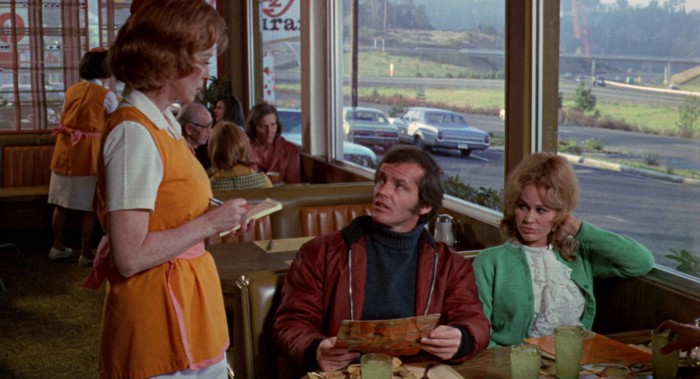
Part 2: Is This Real Life in America?
Blake Harris: So take me through the process once you get there. You're getting off the plane—you don't know anybody—what is your first impression?Renny Harlin: Well, my first impression was that I couldn't believe my eyes. Because I had grown up watching American movies all the time, watching American TV series. And there were certain things—very particular things about American entertainment—that was very different than my life experience in Europe and Finland, and I had somehow presumed that that was kind of make believe. That it was just an illusion created for storytelling. However, when I landed there in L.A., I saw that's actually how life is in America. Just little things. Like let's take Jack Nicholson in Five Easy Pieces—and just a simple thing—but he goes into a diner and he orders a sandwich and the waitress delivers it and the diner looks a certain way. I had assumed that part of that was created for the movies, but now I go into a diner in Hollywood and it looked exactly like the diner in that movie. And I just couldn't believe it. I was like: Is this real life in America? And everything: the cars, the license plates, the street signs. Everything looked like what I had seen in the movies and on TV. So I just kept taking photos of everything because I just couldn't believe it. It was like I was on a movie set.Blake Harris: That's hilarious. Renny Harlin: So it was a completely mind-blowing experience.Blake Harris: Shock and awe aside, how did you logistically go about trying to break into the film business?Renny Harlin: I didn't know anybody, so I would literally go through the yellow pages and try to find producers and studios who would meet with me. That didn't go very well. I met a few people and I said, "Well, I've done these short films and commercials." And they said, "Well, it all looks fine, but you really need to have a feature in order to get a foothold here." So finally I went back to Finland and got together with a friend of mine who had a video distribution company. We were both young guys and we both wanted to make movies, so we pooled up our money and decided to try and make a feature. We wrote a script and hired some American actors and shot as much of it as we could until we ran out of money. We were able to put together like 25 minutes of a movie—a movie with a bunch of action and explosions and some beautiful Finnish scenery—and then we went to Hollywood and started knocking on doors.Blake Harris: And you still didn't know anybody? You're almost literally just knocking on doors?Renny Harlin: Yeah, still didn't know anybody. So we started going around and saying, "Okay, now we have part of a feature. You can get the idea of what we're trying to do. And we want to find someone who will finance the rest of it." Knowing now, knowing in retrospect, how insane our effort was, the only reason why we succeeded was we had no idea how impossible it was, what we were doing. We didn't follow the protocol. We didn't have agents or managers or lawyers or anything like that. We were two Finnish kids, just going to production companies without an appointment. Just showing up and saying, "Hey, can we meet with somebody here who wants to talk about making this movie with us." And a few months went by like that and nothing happened.Blake Harris: Do you think people were even watching the 25 minutes?Renny Harlin: Well, miraculously we had left a videotape with a receptionist and one executive had grabbed that tape on his way home and popped it into his VCR and started watching it. And that executive got kind of into it: Hey, this is pretty cool! The next day he comes into work and asked the receptionist what that videotape was. The receptionist said something like, "I don't know, there were these two kids from Finland here yesterday. I really don't know what it is, but they left their phone number." So the executive called us up and we met with him. We explained the project and that we were looking for more money to finish up the feature. "Well," he asked, "How much more do you need?"Blake Harris: How much more did you need?Renny Harlin: We didn't know! We hadn't really even thought about that because we didn't know how to make a budget. So we looked at each other—tried to sort of read each other's thoughts—and then eventually said, "We need about $500,000." Right after we said it, we felt foolish. $500,000? No way. That's such a crazy big number. Why did we ever say that?! But then he asked us, "For $500,000 you can finish this movie?" Oh yeah, absolutely. "Okay," he said. "Well show us your script, show us your plans and if you can really do it for $500,000 then we'll finance the rest of your film."Blake Harris: Success!Renny Harlin: Long story short: They ended up giving us the money. They sent an executive with us to Finland to watch us do it. Somehow, amazingly, we finished the film. And the film ended up getting released in, like, 1,200 theaters in the United States and sold to every country in the world. When we were making it, we were calling it Arctic Heat, but by the time it got released, the U.S. company had retitled it Born American. It came out, I think, in 1986, and it made some money and it was distributed everywhere. Of course, we didn't make any money. Because we signed all the contracts without reading them first. So we didn't make a cent, but it gave us a first step into actually having made a feature. Then we tried to get our next feature made, which turned out to be really, really tough again.Blake Harris: Amazing, right? I think we all just kind of assume that success is an upward trajectory. But there are always a lot of stops and starts.Renny Harlin: Always...
Part 3: Running Out of Rock Stars
Renny Harlin: So after a year of nothing happening, my partner—the one who was with me in Hollywood—he gave up. He said, "We've lost everything, it's not going to happen." So he went back to Finland. But I couldn't. I felt like I'd rather die than go back to Finland and confess that I'm a failure.Blake Harris: How bad did it get?Renny Harlin: We had maxed out all of our credit cards. We had lost all of our money. I ended up living in a garage in the valley in L.A. for a year. With nothing. I was scraping together enough to, you know, buy food by writing film reviews for obscure Finnish newspapers. I just lived in the garage, ate cheaply. Didn't even have money to go to the movies or anything. I was just absolutely dirt poor. I didn't have a car; I didn't have anything.Blake Harris: How did you rationalize that? You had made this movie—it was successful—and yet, still, you seemed to be in almost the exact same place as before that? What did you think you needed to do differently next time?Renny Harlin: I just felt that I needed to get somebody to see the movie, somebody who would appreciate that we made this movie for, all together, about a million dollars. And somebody who would see that even if the movie was far from a masterpiece, it still had some production values and visuals that I was hoping people would appreciate.Blake Harris: Okay, that makes sense.Renny Harlin: So I was just determined to find that one person who would believe in me. And if that didn't happen then I would just, you know, I didn't know what would happen to me. But I just could not face the idea of going back to Finland, being the laughingstock of everybody and just agreeing to do something else. This was the only thing in my life that I wanted to do. And so, after about a year, somehow I got that videotape in front of Irwin Yablans.Blake Harris: Wonderful.Renny Harlin: Irwin Yablans was the producer who had discovered John Carpenter and produced Halloween. Irwin saw my film and called me up. We met and Irwin said, "I believe in you. I believe in your eye. I believed in John Carpenter once and you're my next discovery." At that time, he had a movie called Prison—which was going to be done for $1.3 million—and it was going to be shot in Wyoming at an old state penitentiary. "It's a little horror film," he said. "Do you want to make it?" And I said—without even seeing the script—I said "Absolutely."Blake Harris: There ya go.Renny Harlin: Then I read the script, I liked it and we worked on it with C. Courtney Joyner [the original screenwriter]. We just kept polishing it. It wasn't anything that happened very quickly—we still had to get the financing together and do all the usual things—but I was actually making a movie with a well-known producer. Finally, we pulled it together. We cast Viggo Mortensen in his first leading role—he was still a young kid in those days—and we made the movie.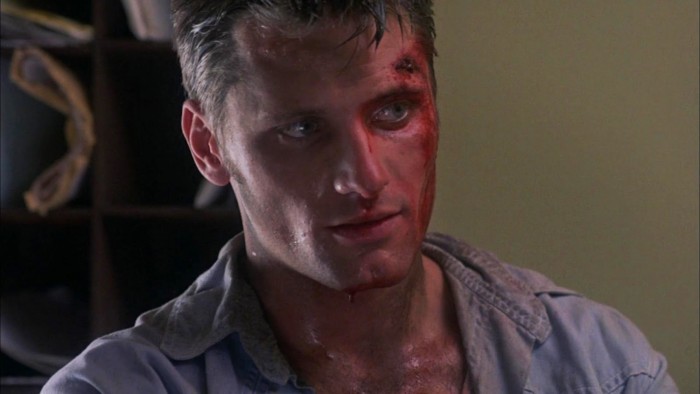 Blake Harris: How was it received? How did the release go?Renny Harlin: It didn't make a big splash. In the long run, it became a semi-respected low-budget horror film—it has attracted a cult following—but it was another stepping stone for me. But at the time, after that, I was kind of back to square one again.Blake Harris: Wow. So what did you do?Renny Harlin: I just kept trying to get people to see that film. And then eventually I got the executives at New Line Cinema to see it—by being completely persistent and refusing to take a no from them—just going back and back and back to New Line Cinema and talking to Bob Shaye, who was the chairman and [founder] of New Line Cinema. I somehow—by being insanely persistent—talked them into giving me Nightmare on Elm Street 4 [The Dream Master]. And then that became a huge hit when it was released and it changed my life. So, you know, I struggled for 3-4 years—I mean, I was a starving artist, literally—but I didn't give up, and it paid off.
Blake Harris: How was it received? How did the release go?Renny Harlin: It didn't make a big splash. In the long run, it became a semi-respected low-budget horror film—it has attracted a cult following—but it was another stepping stone for me. But at the time, after that, I was kind of back to square one again.Blake Harris: Wow. So what did you do?Renny Harlin: I just kept trying to get people to see that film. And then eventually I got the executives at New Line Cinema to see it—by being completely persistent and refusing to take a no from them—just going back and back and back to New Line Cinema and talking to Bob Shaye, who was the chairman and [founder] of New Line Cinema. I somehow—by being insanely persistent—talked them into giving me Nightmare on Elm Street 4 [The Dream Master]. And then that became a huge hit when it was released and it changed my life. So, you know, I struggled for 3-4 years—I mean, I was a starving artist, literally—but I didn't give up, and it paid off.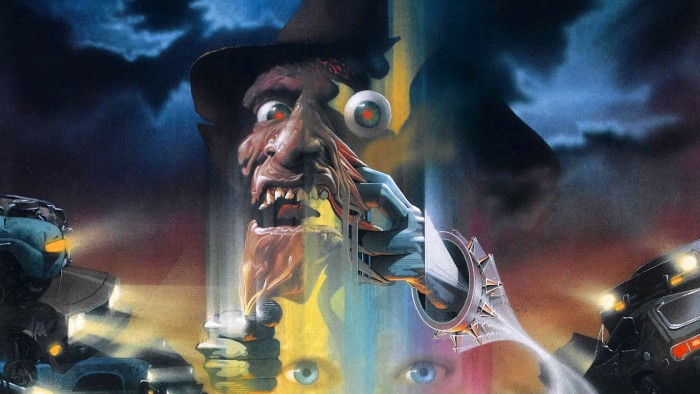 Blake Harris: Tell me about doing Nightmare on Elm Street 4. Obviously it was an enormous success, but tell me about how you approached it given that—unlike your previous films—this was not an original script. This was a known property, a known character. How did you approach that?Renny Harlin: Well, I got very lucky in certain ways. Because when they were putting the movie together, the writers' strike started. The big writer's strike. And they didn't really have a script. They had a blueprint, they had a treatment for a movie, but they didn't really have a script. And they were in trouble because they had a release date set already, so they had to shoot it immediately. They were scratching their heads how to do this. I said, "Don't worry, I can figure out the nightmare sequences very easily. I have a million ideas." And I started storyboarding the nightmares. Like, there was a sequence where the kids get trapped inside a pepperoni and meatball pizza, and Freddy's eating them. And there's a sequence where there's a girl inside a waterbed and all these sequences that I completely dreamed up and just storyboarded for them. Just showed them to New Line, they liked them, and we'd write them into script form. Then we started writing the scenes with Mike De Luca—who was a junior executive at New Line at that point—and Rachel Talalay, who was the producer. The three of us would just sit down: Okay, let's figure out what happens in these nightmares and who these characters are. We wanted it to be this sort of female empowerment story. About this mousy girl who gains strength and defeats Freddy, ultimately.Blake Harris: And what about with regards to Freddy?Renny Harlin: One thing that I felt strongly about was this: We've now had three of these movies and we've established Freddy and everyone's in on the joke, so we can't make a purely scary movie any more. It just doesn't work because everybody knows what's going on. So we have to embrace Freddy and make him into the hero in a way. The phrase that I used was "The James Bond of horror films." We have to make Freddy the James Bond of horror films. We have to make him funny, in a way. We have to wink at the audience and say: We get it, it's Freddy and he has his tricks and we know that you know what's going to happen. We're going to make him funny, and we're going to make him into this almost wisecracking hero of the movie.Blake Harris: [laughing]Renny Harlin: So amazingly, New Line got behind my idea. It was a big risk: We were taking a horror franchise and turning it around. I remember that everybody was very nervous about this during the shoot. Like I remember Bob Shaye coming to the set, and he wouldn't even really talk to me. He'd just watch from the corner of the set, looking really worried and nervous. And I was sweating bullets, thinking that either I'm doing something that is really going to work or this is going to be the biggest disaster ever and I'm going to ruin this franchise.Blake Harris: So how and when did you find out which way it was gonna go?Renny Harlin: So we make the movie. We cut it together. Even in the editing process, everyone was kind of worried and serious. Then we had our first test screening at Warner Hollywood. We were gathered there in the back row, all the executives and me, and the room was full and the anticipation was high. The film starts rolling and the audience was just eating it up. They were yelling, they were laughing, they were applauding several times in the middle of the movie. It was just one of those...it was probably the greatest experience of my life. Because all the nervousness, all the fear, all the anxiety, all the effort, all the living in a miserable place without food, it was paying off. And we looked at each other and said, "We have a hit film."Blake Harris: How fantastic.Renny Harlin: The movie opened in August and it broke every record. It was the biggest opening weekend in August ever. And on top of that, it got great reviews. It was mind-blowing that a fourth sequel in a horror series actually got really good reviews. So that, overnight, it literally changed my life.Blake Harris: Incredible. I'll admit that I never quite connected the dots—never quite realized how intentional and subversive your take was—but frankly I'm not totally surprised because one thing you've done very well in your career is craft memorable (and often unexpected) villains for your movies. Especially at a time—the '80s and '90s, I mean—when it felt like the villain of most action films was just Generic Bad Guy.Renny Harlin: [laughing]
Blake Harris: Tell me about doing Nightmare on Elm Street 4. Obviously it was an enormous success, but tell me about how you approached it given that—unlike your previous films—this was not an original script. This was a known property, a known character. How did you approach that?Renny Harlin: Well, I got very lucky in certain ways. Because when they were putting the movie together, the writers' strike started. The big writer's strike. And they didn't really have a script. They had a blueprint, they had a treatment for a movie, but they didn't really have a script. And they were in trouble because they had a release date set already, so they had to shoot it immediately. They were scratching their heads how to do this. I said, "Don't worry, I can figure out the nightmare sequences very easily. I have a million ideas." And I started storyboarding the nightmares. Like, there was a sequence where the kids get trapped inside a pepperoni and meatball pizza, and Freddy's eating them. And there's a sequence where there's a girl inside a waterbed and all these sequences that I completely dreamed up and just storyboarded for them. Just showed them to New Line, they liked them, and we'd write them into script form. Then we started writing the scenes with Mike De Luca—who was a junior executive at New Line at that point—and Rachel Talalay, who was the producer. The three of us would just sit down: Okay, let's figure out what happens in these nightmares and who these characters are. We wanted it to be this sort of female empowerment story. About this mousy girl who gains strength and defeats Freddy, ultimately.Blake Harris: And what about with regards to Freddy?Renny Harlin: One thing that I felt strongly about was this: We've now had three of these movies and we've established Freddy and everyone's in on the joke, so we can't make a purely scary movie any more. It just doesn't work because everybody knows what's going on. So we have to embrace Freddy and make him into the hero in a way. The phrase that I used was "The James Bond of horror films." We have to make Freddy the James Bond of horror films. We have to make him funny, in a way. We have to wink at the audience and say: We get it, it's Freddy and he has his tricks and we know that you know what's going to happen. We're going to make him funny, and we're going to make him into this almost wisecracking hero of the movie.Blake Harris: [laughing]Renny Harlin: So amazingly, New Line got behind my idea. It was a big risk: We were taking a horror franchise and turning it around. I remember that everybody was very nervous about this during the shoot. Like I remember Bob Shaye coming to the set, and he wouldn't even really talk to me. He'd just watch from the corner of the set, looking really worried and nervous. And I was sweating bullets, thinking that either I'm doing something that is really going to work or this is going to be the biggest disaster ever and I'm going to ruin this franchise.Blake Harris: So how and when did you find out which way it was gonna go?Renny Harlin: So we make the movie. We cut it together. Even in the editing process, everyone was kind of worried and serious. Then we had our first test screening at Warner Hollywood. We were gathered there in the back row, all the executives and me, and the room was full and the anticipation was high. The film starts rolling and the audience was just eating it up. They were yelling, they were laughing, they were applauding several times in the middle of the movie. It was just one of those...it was probably the greatest experience of my life. Because all the nervousness, all the fear, all the anxiety, all the effort, all the living in a miserable place without food, it was paying off. And we looked at each other and said, "We have a hit film."Blake Harris: How fantastic.Renny Harlin: The movie opened in August and it broke every record. It was the biggest opening weekend in August ever. And on top of that, it got great reviews. It was mind-blowing that a fourth sequel in a horror series actually got really good reviews. So that, overnight, it literally changed my life.Blake Harris: Incredible. I'll admit that I never quite connected the dots—never quite realized how intentional and subversive your take was—but frankly I'm not totally surprised because one thing you've done very well in your career is craft memorable (and often unexpected) villains for your movies. Especially at a time—the '80s and '90s, I mean—when it felt like the villain of most action films was just Generic Bad Guy.Renny Harlin: [laughing]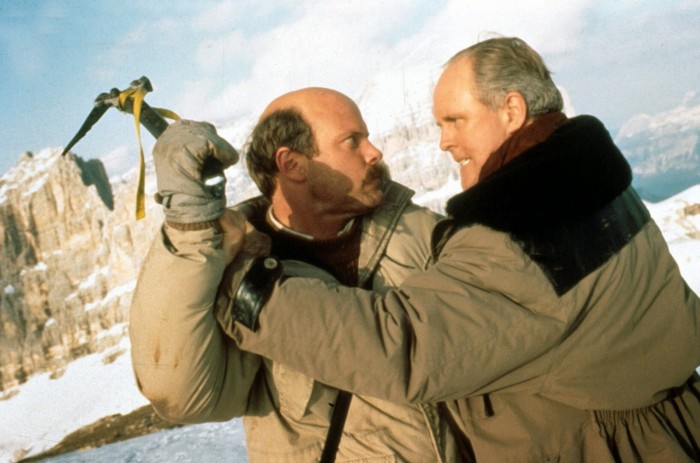 Blake Harris: You always brought a new twist to your antagonists. And, oftentimes, you made interesting casting choices like John Lithgow in Cliffhanger. As I mentioned earlier, that was the first ever Rated-R movie I saw—and was a favorite in the Harris house for years—so I'd be curious to hear how you cast Lithgow in that role.Renny Harlin: Well, I feel like I learned very early on that your heroes are only as powerful as your villains. And I'm attracted to intelligent villains. I think that villains who are just brawn, muscles and weapons are boring. So I always try to find intelligence in my villains and also a sense of humor whenever that is possible. With Cliffhanger, we actually had an interesting journey because I wanted to find a villain who would be very unusual and different from what people were used to seeing on screen. So my first idea was David Bowie.Blake Harris: David Bowie? Really?Renny Harlin: Yes! I approached David Bowie and went to New York to meet with him. We had a meeting and we talked seriously about doing it. However, schedules and whatever didn't work out. So, in the end, it wasn't meant to be. With Bowie out, I still wanted to find a rock star, so we went to Bryan Ferry from Roxy Music. We had a great meeting in London—we were both really excited to do it together—but then again the schedules didn't work out. So then I was kind of running out rock stars.Blake Harris: Ha!Renny Harlin: So I put my thinking cap on and I thought: You know, someone who comes across as intellectual and is funny (but is still very tall and kind of imposing) is John Lithgow. He was known, of course, for his great dramatic work and theater performances, but I thought he might be an interesting choice. So I met with him, we talked about the role, and the two of us really hit it off. And talking with him, I felt like: Oh yeah, he's perfect! We can even rewrite the villain to really fit him and make him an incredibly Machiavellian, clever guy. And that's how it became John Lithgow.
Blake Harris: You always brought a new twist to your antagonists. And, oftentimes, you made interesting casting choices like John Lithgow in Cliffhanger. As I mentioned earlier, that was the first ever Rated-R movie I saw—and was a favorite in the Harris house for years—so I'd be curious to hear how you cast Lithgow in that role.Renny Harlin: Well, I feel like I learned very early on that your heroes are only as powerful as your villains. And I'm attracted to intelligent villains. I think that villains who are just brawn, muscles and weapons are boring. So I always try to find intelligence in my villains and also a sense of humor whenever that is possible. With Cliffhanger, we actually had an interesting journey because I wanted to find a villain who would be very unusual and different from what people were used to seeing on screen. So my first idea was David Bowie.Blake Harris: David Bowie? Really?Renny Harlin: Yes! I approached David Bowie and went to New York to meet with him. We had a meeting and we talked seriously about doing it. However, schedules and whatever didn't work out. So, in the end, it wasn't meant to be. With Bowie out, I still wanted to find a rock star, so we went to Bryan Ferry from Roxy Music. We had a great meeting in London—we were both really excited to do it together—but then again the schedules didn't work out. So then I was kind of running out rock stars.Blake Harris: Ha!Renny Harlin: So I put my thinking cap on and I thought: You know, someone who comes across as intellectual and is funny (but is still very tall and kind of imposing) is John Lithgow. He was known, of course, for his great dramatic work and theater performances, but I thought he might be an interesting choice. So I met with him, we talked about the role, and the two of us really hit it off. And talking with him, I felt like: Oh yeah, he's perfect! We can even rewrite the villain to really fit him and make him an incredibly Machiavellian, clever guy. And that's how it became John Lithgow.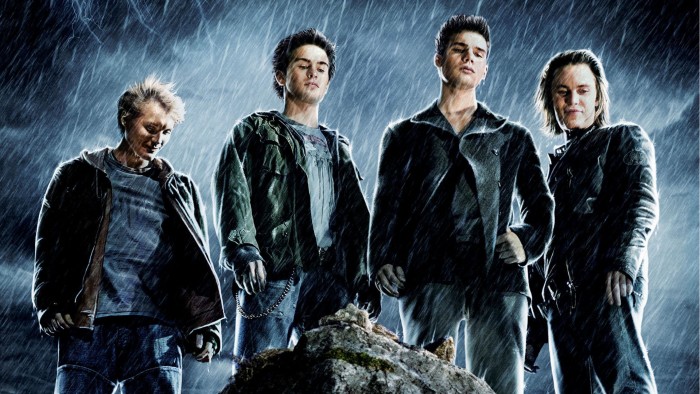
Part 4: Just the Sexiest Cast Ever
Blake Harris: Given how much I loved several of your movies—not just Cliffhanger, but also others like Die Hard 2 and The Long Kiss Goodnight—I could go on and on for hours. And hopefully we'll get a chance to have a part two at some point down the line. But before we end this conversation, I wanted to talk a little bit about The Covenant, which we recently featured on How Did This Get Made? Can you tell me about how that opportunity came about?Renny Harlin: That was actually interesting. That project was a real, sort of, baby of Clint Culpepper, who is the president of Screen Gems at Sony. He had this dream of making this movie about male witches. And so one day I get a call from my agents saying, "Clint Culpepper wants you to do this movie, The Covenant. He wants you to read it right away. Can you read it today?" And I was like, "Okay, send it to me." I was sent the script in the morning, I read it and I liked it right away. It needed work, but I liked the concept. I called back in the afternoon and said, "Yeah, I read it and I liked it." They relay the information and—this is still all the same day—Clint Culpepper asks them if I can have dinner with them that night. Okay. So we have dinner that night in Venice and Clint says, "I want you to do this movie. It's going to be awesome." I said, "Okay, I like it a lot, but the script needs work. So as long as we can do that, I'm in." And we shake hands.Blake Harris: So just like that?Renny Harlin: It was literally like 10 hours from the moment that I first heard about this movie that I was now making it. It was literally the fastest anything like that's ever happened. And so we started making it, working on the script and casting it.Blake Harris: Tell me more about casting it...Renny Harlin: The casting process was really interesting because we had the same vision: Let's find young, awesome guys who can be unknowns but we'll make them into stars. We told our casting director to set her net wide and just go for it and try to find new talent. And somehow, you know, she went to the modeling agencies...we said, "Just bring awesome-looking guys who hopefully can act. We want this to be just the sexiest cast ever."Blake Harris: [laughing]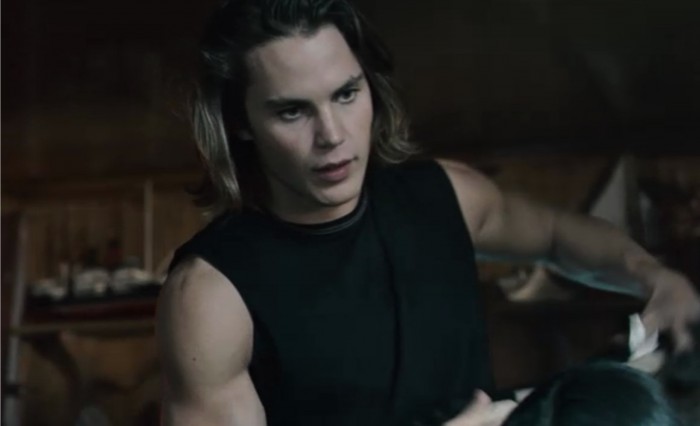 Renny Harlin: That's how we cast people like Taylor Kitsch. He was a model guy who had done only one really small role before. On Snakes on a Plane. And Chace Crawford, who had never been in front of a camera ever, ever, ever. Toby Hemingway hadn't done much. Sebastian Stan hadn't done much. Steven Strait had a couple of leading roles, but wasn't a household name yet. So we saw hundreds of guys for sure. And we wanted to create a chemistry where the guys all represent something different. That's how we put the cast together. It was a little bit scary because with a couple of them, they really were so green. But they did auditions and we believed in them and worked with them doing the shoot, and it all turned out to be good. And the incredible thing is, obviously, those guys all did turn out to be stars.Blake Harris: Yeah, you guys knocked it out of the park.Renny Harlin: They've all done well, and some of them have done incredibly well. And it was fun working with them, young guys at the beginning of their career. We were really a tightly knit group. We shot the movie in Montreal. We went out every weekend together; we would go dancing and drinking and just have fun together. The actors were really like a brotherhood and together we bonded and had a fantastic time working together.Blake Harris: Given your track record and how new to film these guys were, I would imagine that they must have looked up to you in some way. What was your approach to working with such young talent, and what kind of advice were you able to give them?Renny Harlin: Well, you know, I believe the important part of directing really is finding the right people for the right roles. Sometimes you go for what's expected, and sometimes you go against type because you think that'll really bring something different to the movie. And in this case, my main thing was the character and getting them really to get inside their character. Then spending time with them, talking about the character, to make them feel really comfortable with the character. Taking into account who they are as people, especially when they are inexperienced actors, what they can bring to the party, I wanted to get to know them as people. What are they afraid of? What are they shy about? What are they insecure about? What do they feel strong about? And that way, sort of mold the role to be as close to what they would naturally be able to play as possible. And then during the shoot, just encouraging them. To not be shy, not be self-conscious. To just embrace the role and the situation and the camaraderie between actors and characters. Just live in the moment and not be afraid to try things out and make mistakes. I say, "We can make as many takes as we need to, so let's try it this way and that way—maybe a little more lighthearted, maybe a little more dark—and don't worry about it." The main thing is to make them feel comfortable that they can fail and they can try. And in general, as we were hanging out, my advice to them was basically just to pursue their dreams (if they believe that this is what they want to do). To pursue it despite possible difficulties and also never let it go to their heads and become entitled. To put it simple: not to become assholes.
Renny Harlin: That's how we cast people like Taylor Kitsch. He was a model guy who had done only one really small role before. On Snakes on a Plane. And Chace Crawford, who had never been in front of a camera ever, ever, ever. Toby Hemingway hadn't done much. Sebastian Stan hadn't done much. Steven Strait had a couple of leading roles, but wasn't a household name yet. So we saw hundreds of guys for sure. And we wanted to create a chemistry where the guys all represent something different. That's how we put the cast together. It was a little bit scary because with a couple of them, they really were so green. But they did auditions and we believed in them and worked with them doing the shoot, and it all turned out to be good. And the incredible thing is, obviously, those guys all did turn out to be stars.Blake Harris: Yeah, you guys knocked it out of the park.Renny Harlin: They've all done well, and some of them have done incredibly well. And it was fun working with them, young guys at the beginning of their career. We were really a tightly knit group. We shot the movie in Montreal. We went out every weekend together; we would go dancing and drinking and just have fun together. The actors were really like a brotherhood and together we bonded and had a fantastic time working together.Blake Harris: Given your track record and how new to film these guys were, I would imagine that they must have looked up to you in some way. What was your approach to working with such young talent, and what kind of advice were you able to give them?Renny Harlin: Well, you know, I believe the important part of directing really is finding the right people for the right roles. Sometimes you go for what's expected, and sometimes you go against type because you think that'll really bring something different to the movie. And in this case, my main thing was the character and getting them really to get inside their character. Then spending time with them, talking about the character, to make them feel really comfortable with the character. Taking into account who they are as people, especially when they are inexperienced actors, what they can bring to the party, I wanted to get to know them as people. What are they afraid of? What are they shy about? What are they insecure about? What do they feel strong about? And that way, sort of mold the role to be as close to what they would naturally be able to play as possible. And then during the shoot, just encouraging them. To not be shy, not be self-conscious. To just embrace the role and the situation and the camaraderie between actors and characters. Just live in the moment and not be afraid to try things out and make mistakes. I say, "We can make as many takes as we need to, so let's try it this way and that way—maybe a little more lighthearted, maybe a little more dark—and don't worry about it." The main thing is to make them feel comfortable that they can fail and they can try. And in general, as we were hanging out, my advice to them was basically just to pursue their dreams (if they believe that this is what they want to do). To pursue it despite possible difficulties and also never let it go to their heads and become entitled. To put it simple: not to become assholes.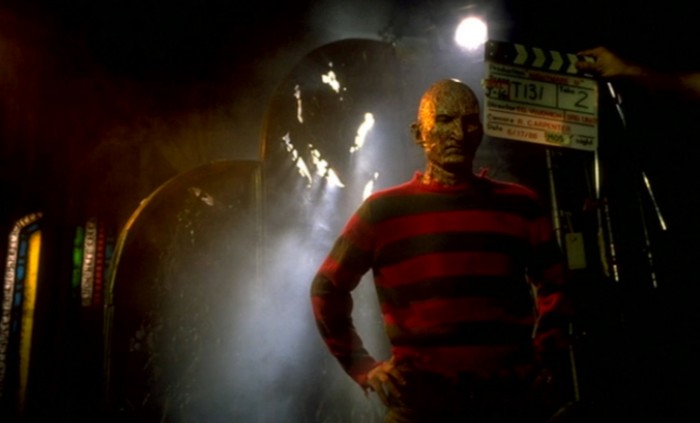
Part 5: Mom, I Made It
Blake Harris: Just a few more questions. I was thinking a little bit about your experience on Nightmare on Elm Street 4. How you took a big risk and how well that paid off. But taking risk are, well, risky. It doesn't always go the right way. Do you have any advice on when to go for it and when to maybe play it a little safer?Renny Harlin: What we did on [Nightmare on Elm Street 4] was a gamble, but it was one I fought for from my heart. And that's one thing that I've learned in my career that's had its ups and downs. That when I follow my heart, usually the results are good. When I make decisions based on other circumstances, things don't necessarily go so well. So sometimes, even if something seems commercially tempting, I've learned that if it's not what's in your heart, it's probably not what you should do.Blake Harris: That's great. And in terms of following your heart and following your dreams, I was wondering if you ever had a conversation with your parents that kind of reflects on your decision. The kind of conversation where they might have said, "Good thing you didn't become an architect!" I guess what I'm asking is at what point did they feel comfortable with their son having gone down this risky career path?Renny Harlin: That's a really good question. My dad, sadly, died before he was ever able to see my success. So he never saw me reach any heights. But I'm sure he, you know, ultimately believed I would make it. In terms of my mom, I really had some fantastic opportunities to show her my gratitude and make her happy. Because she went through incredible amounts of suffering when I was in Hollywood at first. I didn't even have money to call Finland. So there were periods of, like, half a year where she didn't know if I was alive. And so she really had to suffer. So I will always remember when I called her that weekend when Nightmare on Elm Street [4] opened. I called her and I said, "Mom, I made it." And she cried on the phone.Blake Harris: That's beautiful.Renny Harlin: And Bob Shaye, who I happened to be with at the time, he got on the phone and spoke to my mother and said, "You should be proud of your son. He's made the biggest hit in the history of our studio." That was the first moment where my mom...I just knew that her heart was bursting with pride. And then I had many more opportunities to reward her for everything that I had been through and what I put my mother through. For example, when Cliffhanger premiered—it had its world premiere at the Cannes Film Festival—I brought my mom as my date there and I walked the red carpet with people applauding and screaming. My dates were Sylvester Stallone, my mom and Elizabeth Taylor. Then we went to a big celebratory dinner and my mom was sitting between Sylvester Stallone and Elizabeth Taylor. My mom had grown up watching movies with Elizabeth Taylor starring in them, so that was just one of those moments that blew her mind.Blake Harris: That's so wonderful, Renny. Wow. Just one more question or you. What happened to your former film partner? The one who came with you to America and then ended up leaving to go back to Finland?Renny Harlin: Well, interestingly enough, he went on to be a huge success in Finland. He started producing films and TV in Finland, and he currently has the most successful production company in Finland. Every year, he produces the biggest box office hit of the year. He has several TV shows on the air. So he has really become the godfather of movies in Finland and has had an incredible success there. He keeps making movies there, I keep making movies around the world and we get together whenever we can. We are still best friends and we are constantly in touch. I think that for him, being in Finland made him happy; he was more strongly rooted in Finland. And for me, being a kind of citizen of the world—living in Hollywood for almost 30 years and spending the better part of these last two years in China—I'm happy traveling the world and going back to visit Finland. He's happy to live in Finland and visit the other parts of the world. So we both got what we wanted, and so far it looks like a pretty happy ending for both of us.As referenced at the top of this piece, Renny Harlin recently launched a production company in China. This October, Harlin is scheduled to begin production on Legend of the Ancient Sword, which will be distributed by Alibaba Pictures Group.

